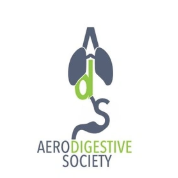After thorough evaluation, the aerodigestive team will implement a treatment plan that may include medical management, surgical interventions, and various therapies. Because aerodigestive conditions often have multiple causes, the treatment plan can be multi-faceted. Below is an overview of the types of treatments and interventions commonly offered, and how they help address aerodigestive issues:
• Medications: Many children benefit from medicines to treat components of their condition. For example, if acid reflux is part of the problem, acid suppressors like proton pump inhibitors (e.g., omeprazole) or H2 blockers (e.g., ranitidine) may be prescribed to heal esophagitis and prevent reflux-related aspiration. If there is airway inflammation or reactive airway disease, inhaled steroids or bronchodilators (like asthma inhalers) may be used to reduce inflammation and open the airways. For children with sinusitis or chronic wet cough, antibiotics or mucus-thinning agents might be given. In certain cases, if motility is an issue, pro-motility drugs can help the stomach empty faster. The medication plan is tailored to treat what the team found – for instance, if eosinophilic esophagitis was diagnosed, swallowed steroid medications or dietary changes will be started to reduce esophageal inflammation.
• Surgical Interventions (Airway and Digestive): Some conditions require procedures or surgeries to correct anatomical problems. ENT surgeons on the team might perform laryngotracheal reconstruction surgery for significant subglottic stenosis (widening the airway with cartilage grafts) or laryngeal cleft repair (surgically closing the abnormal opening between the airway and esophagus, often done endoscopically). If tonsils or adenoids are contributing to airway obstruction or sleep apnea, an adenotonsillectomy might be recommended. For children with tracheostomy tubes who are candidates for decannulation, airway surgeries or granulation tissue removal might be steps toward getting the trach out. On the GI side, a surgeon may perform a fundoplication (wrapping the top of the stomach around the esophagus) to prevent severe reflux when medicines aren’t enough, or place a gastrostomy tube (G-tube) for nutrition if oral feeding isn’t safe or adequate. All these interventions are planned with input from the whole team. Importantly, if multiple surgical procedures are needed, the aerodigestive program often coordinates them to happen in the same anesthesia session when possible, improving safety and efficiency .
• Therapies (Feeding, Speech, Respiratory): Therapy services are a cornerstone of aerodigestive treatment. A feeding therapy program might be implemented to teach a child how to eat safely and efficiently. This could involve weekly sessions with a speech-language pathologist or occupational therapist, where the child practices swallowing techniques, works on accepting new food textures, or builds oral muscle strength. For children with voice issues after airway surgery or prolonged intubation, speech therapy exercises can help improve vocal cord function and voice quality. Additionally, respiratory therapy techniques may be used for lung health – for example, using a nebulizer at home, doing chest physiotherapy (vest therapy or percussion) to clear airway secretions, or practicing breathing exercises for lung expansion. These non-invasive therapies often significantly improve outcomes by addressing the functional side of aerodigestive disorders (how the child swallows or breathes in daily life).
• Nutritional Support: Ensuring a child gets adequate nutrition is critical, especially if they have feeding difficulties or increased caloric needs due to a chronic illness. The nutritionist will craft a diet plan, which might include high-calorie shakes or formulas if the child is underweight. In some cases, temporary or long-term tube feeding is part of the treatment. If a child has a G-tube or NG-tube, the team will set goals for gradually advancing oral feeding when safe, so that reliance on tube feeding can be reduced over time. Vitamins or supplements might be added if there are deficiencies (like Vitamin D if bone health is a concern, or thickening agents for liquids to make them safer to swallow). The team continuously monitors growth and will tweak the nutritional strategy as the child grows or as medical conditions improve.
• Behavioral and Developmental Interventions: For children whose feeding or breathing issues are compounded by behavioral components (for example, a child is very orally aversive due to a history of intubation and is afraid to eat), the program might include behavioral psychology support. This can help with desensitization techniques to make the child more comfortable with eating by mouth, or coping strategies for anxiety around medical procedures. Likewise, if a child has developmental delays, the team ensures they get early intervention services or therapies (physical therapy, etc.) outside of the aerodigestive clinic to address global needs.
Every aerodigestive patient’s treatment plan is personalized. One child might need a surgical repair and then a lot of feeding therapy, another might avoid surgery but need intensive medical management and nutritional support. The key benefit of the program is that all these interventions are coordinated. The ENT, pulmonologist, and gastroenterologist are in constant communication about timing – for instance, starting a reflux medication a few months before planning an airway surgery, to ensure the reflux is controlled and won’t hinder healing . The team will also coordinate with your local doctors; for example, if your pediatrician or local therapists will carry out parts of the plan, the aerodigestive team will provide them with detailed recommendations. The ultimate goal of treatment is to resolve or significantly improve the child’s breathing and feeding issues, allowing them to thrive and engage in normal activities for their age.
Next: Family’s Role in Care
